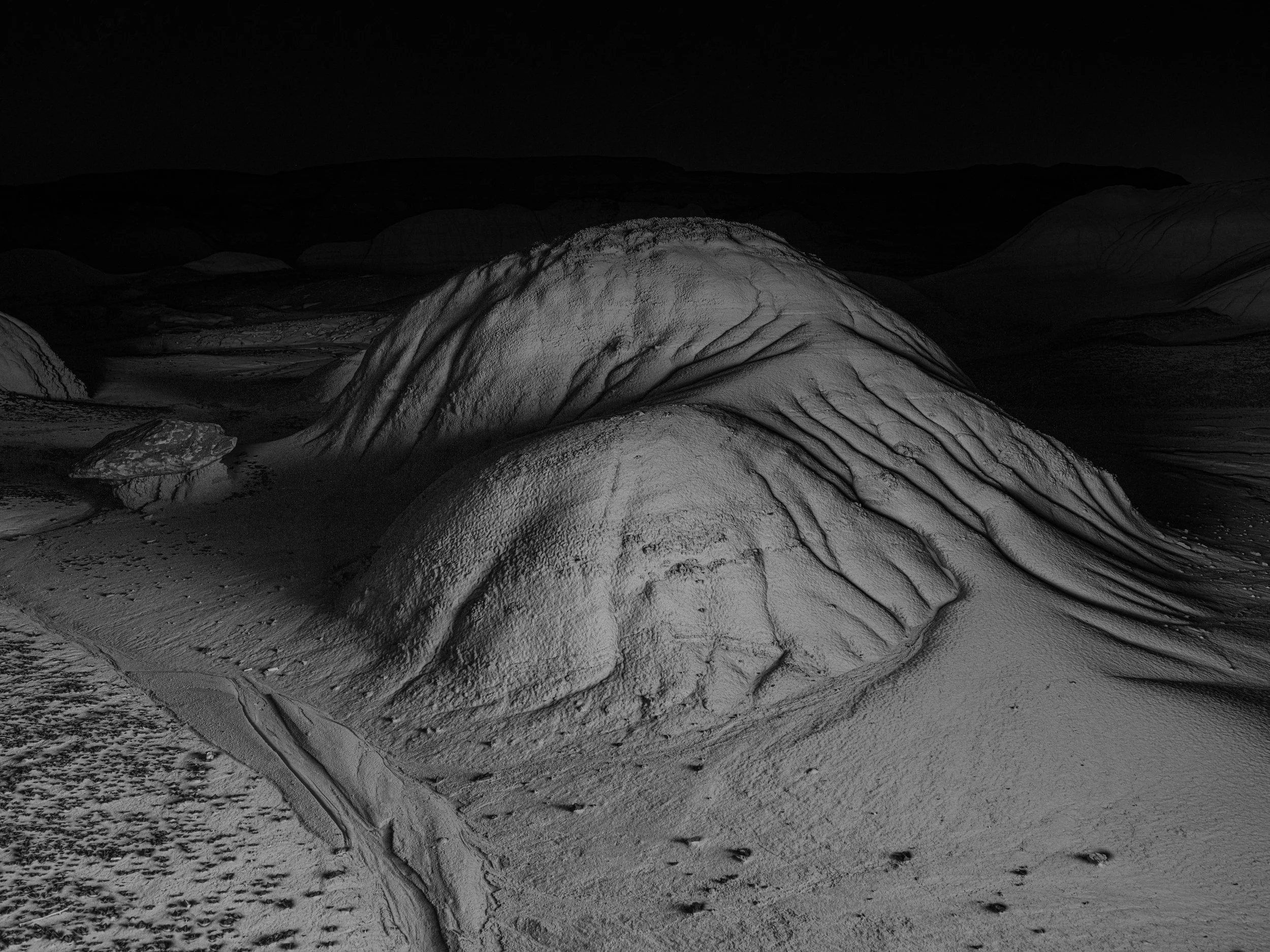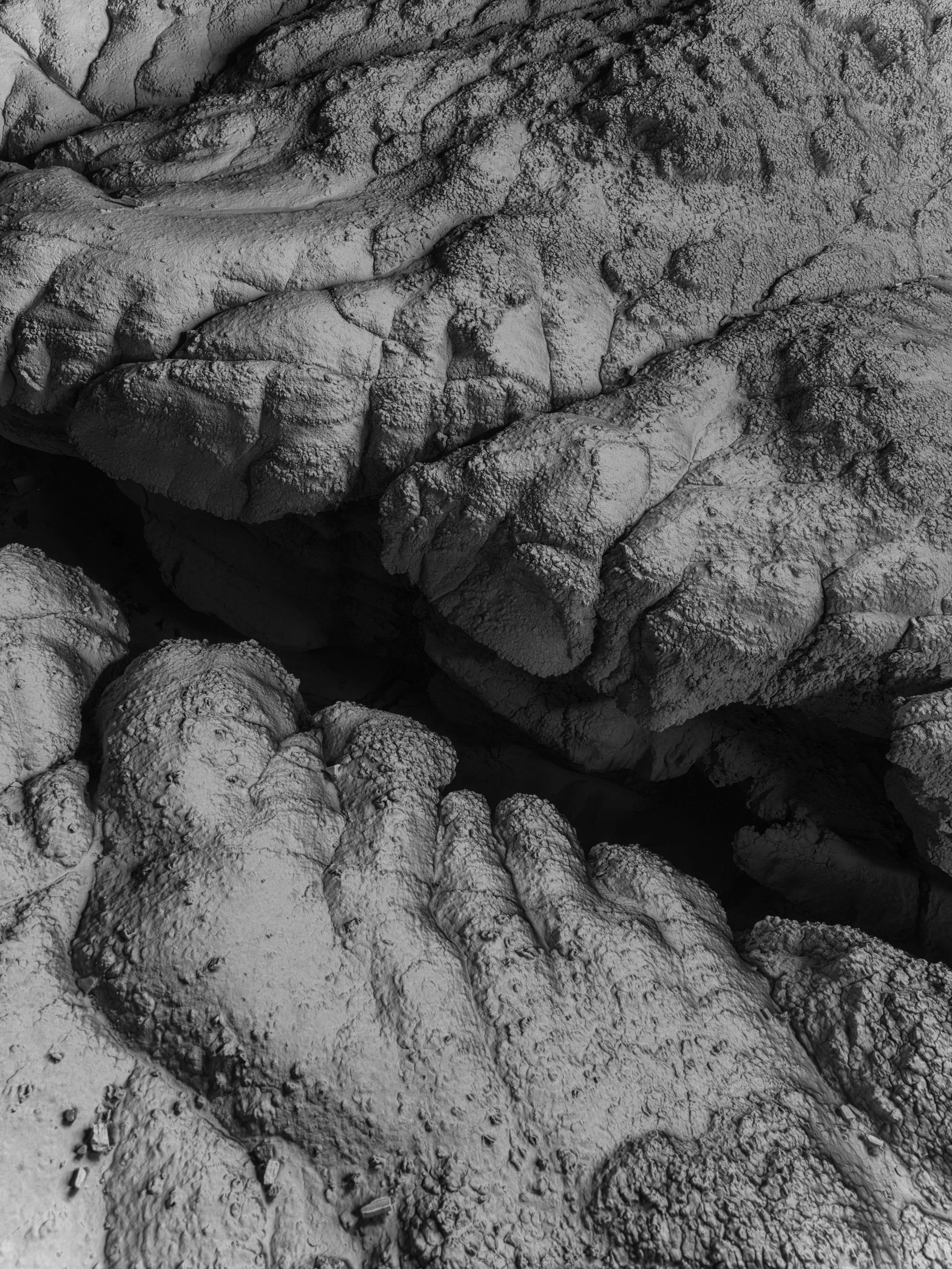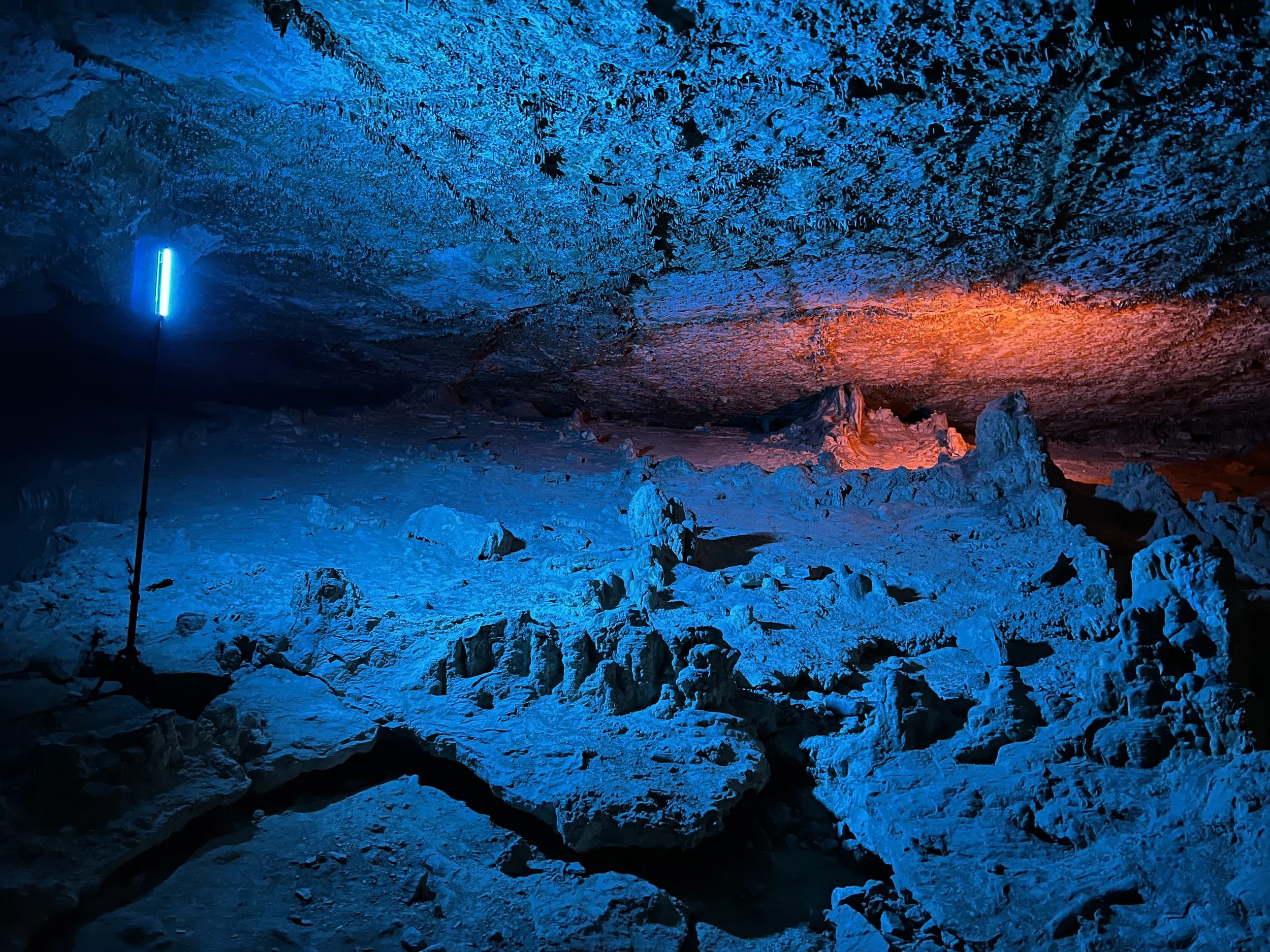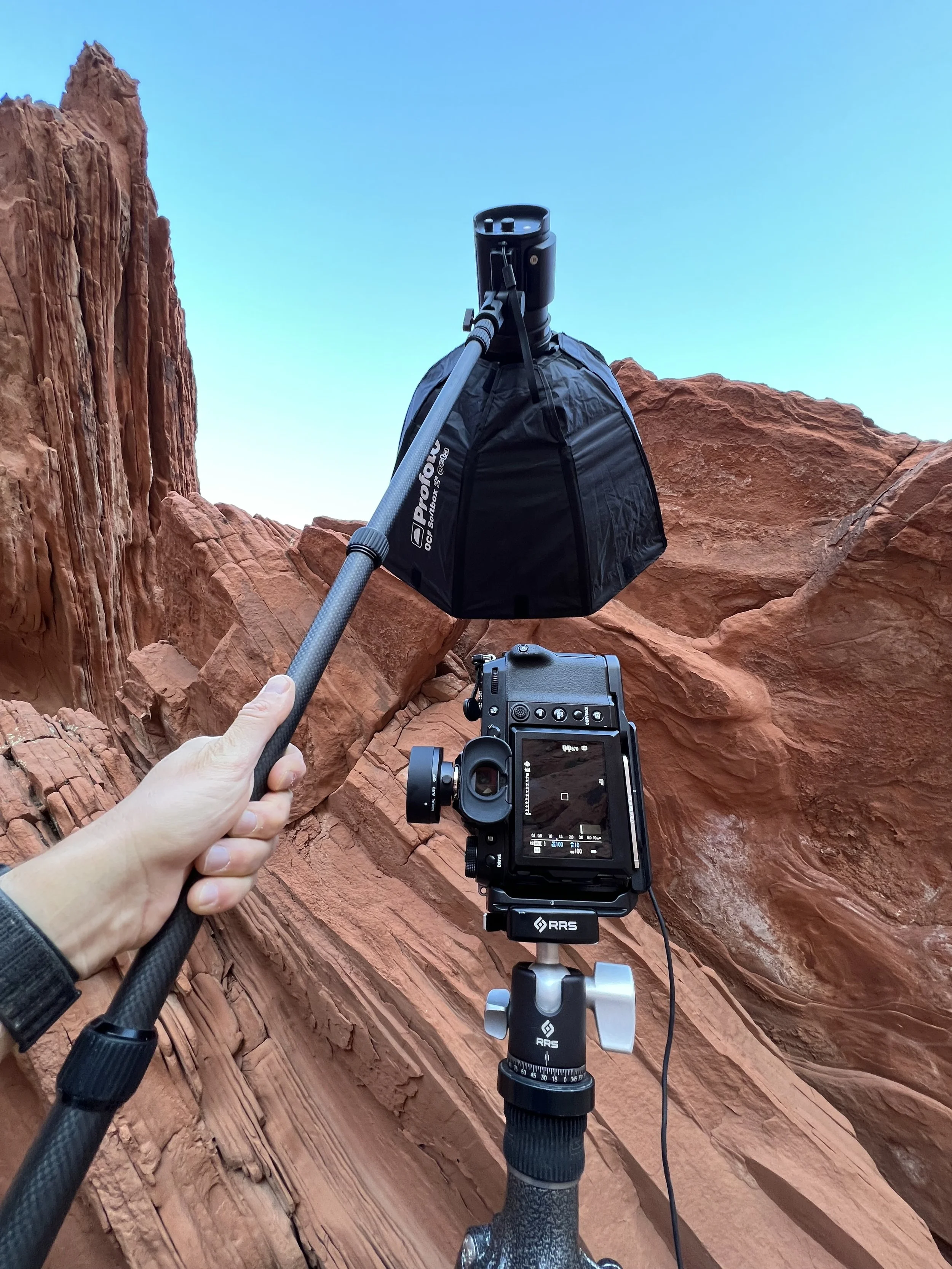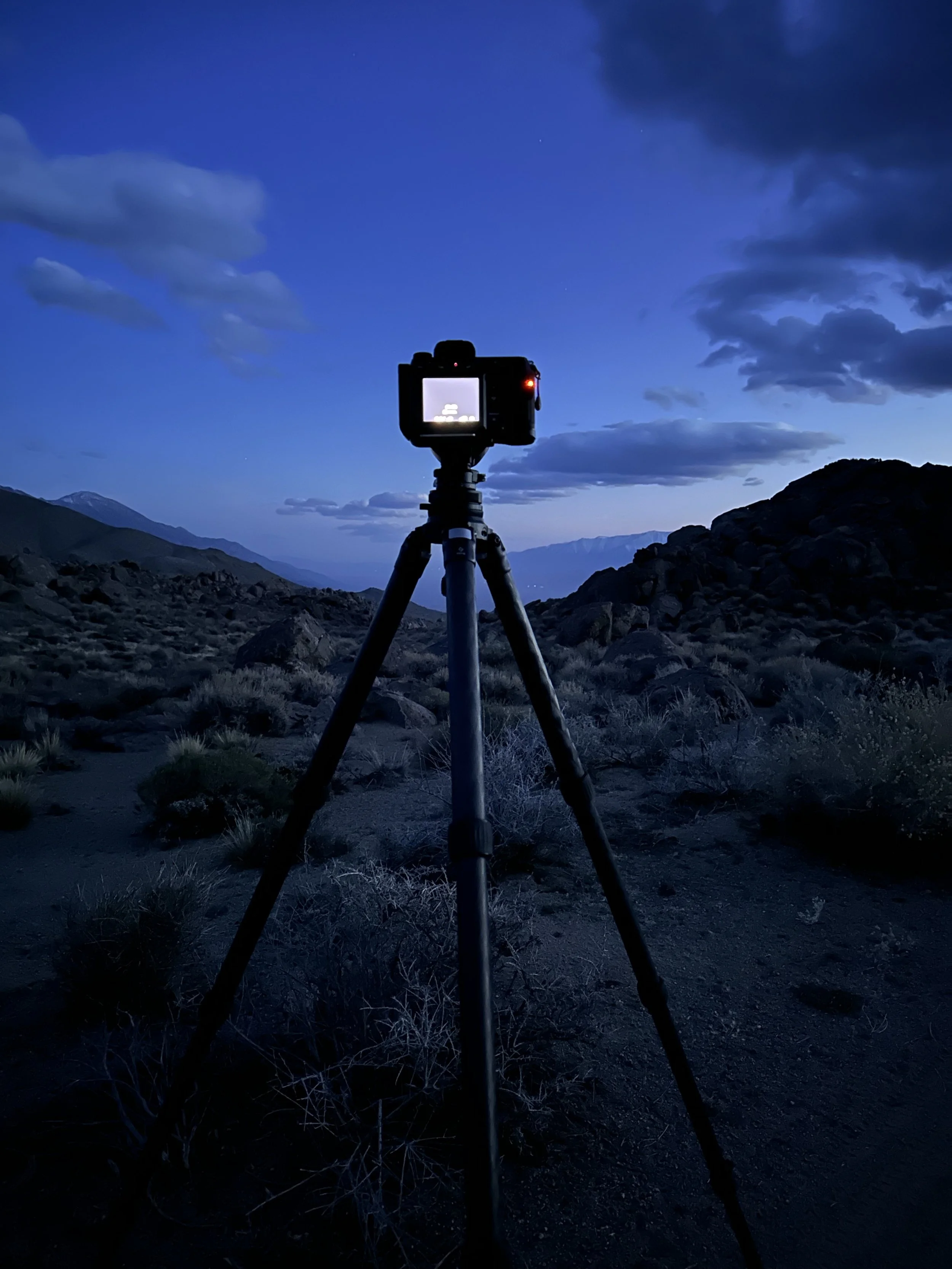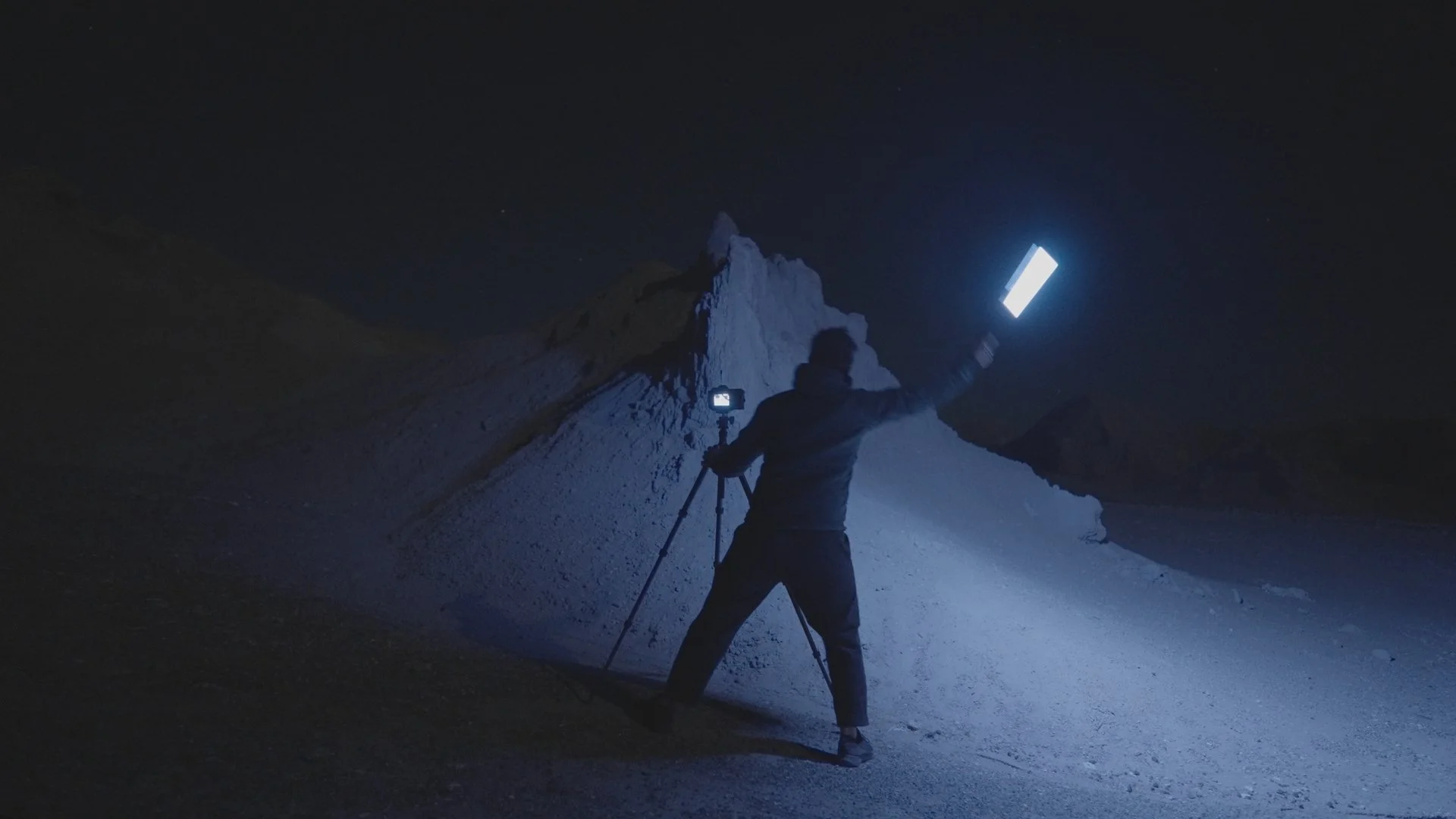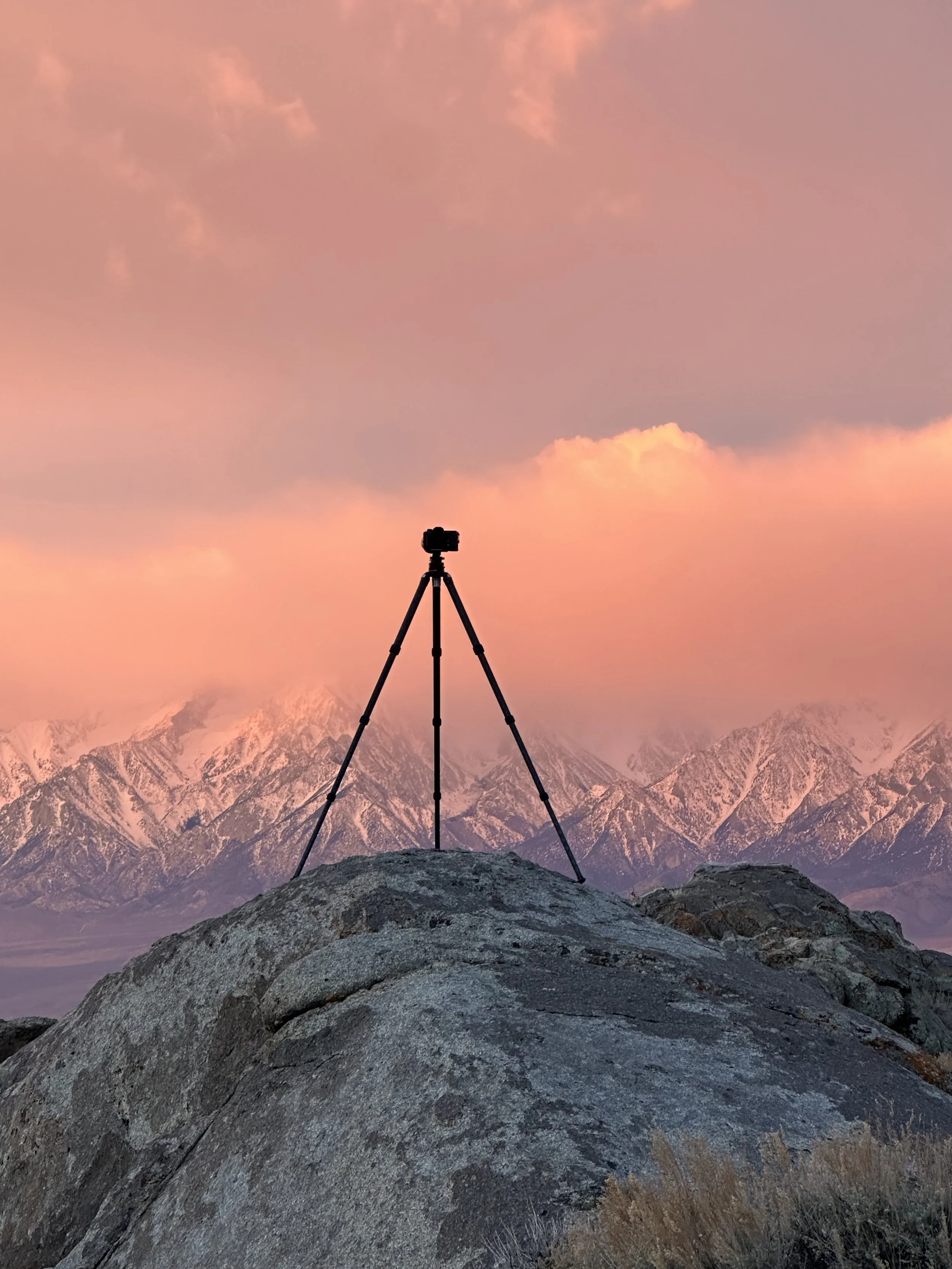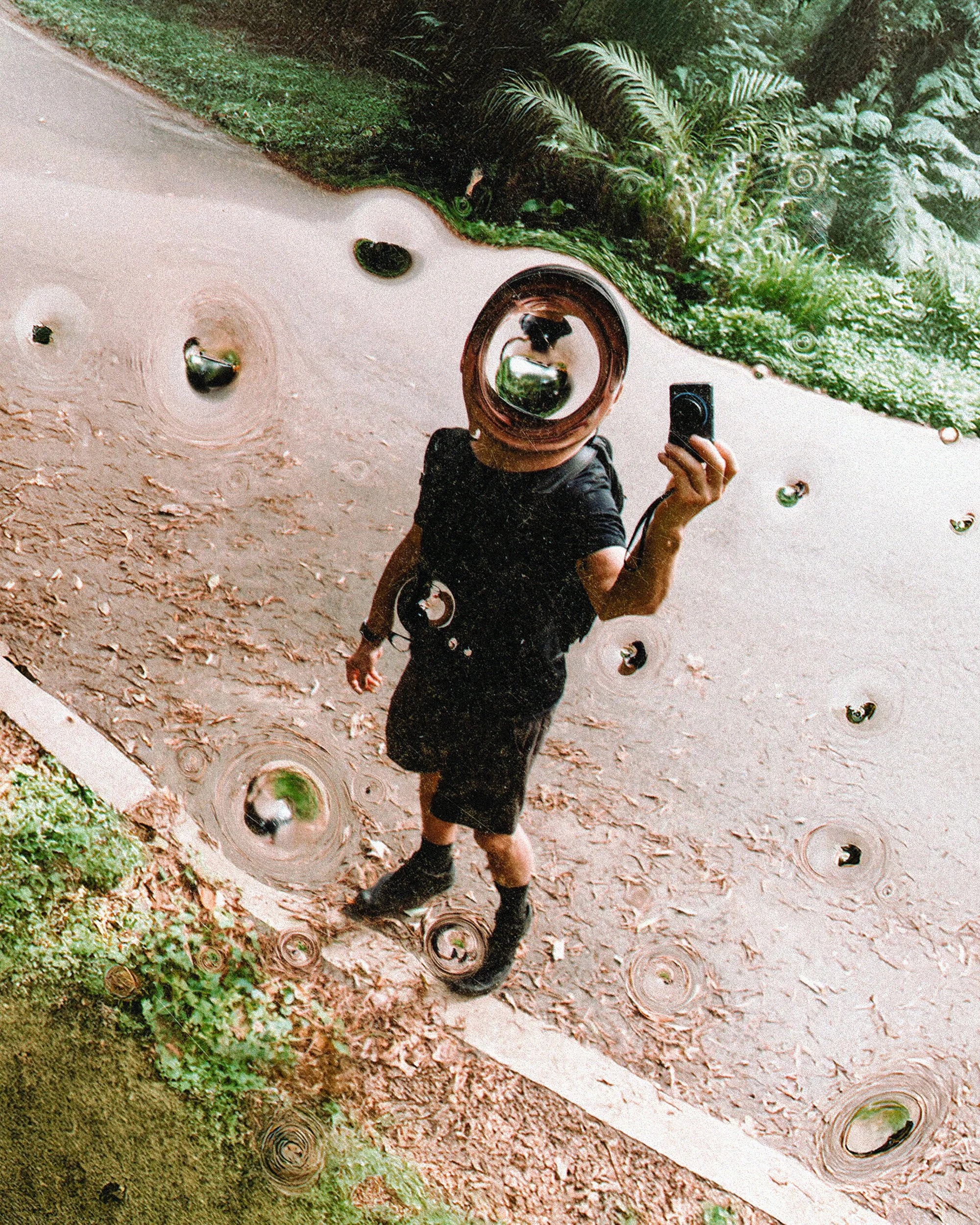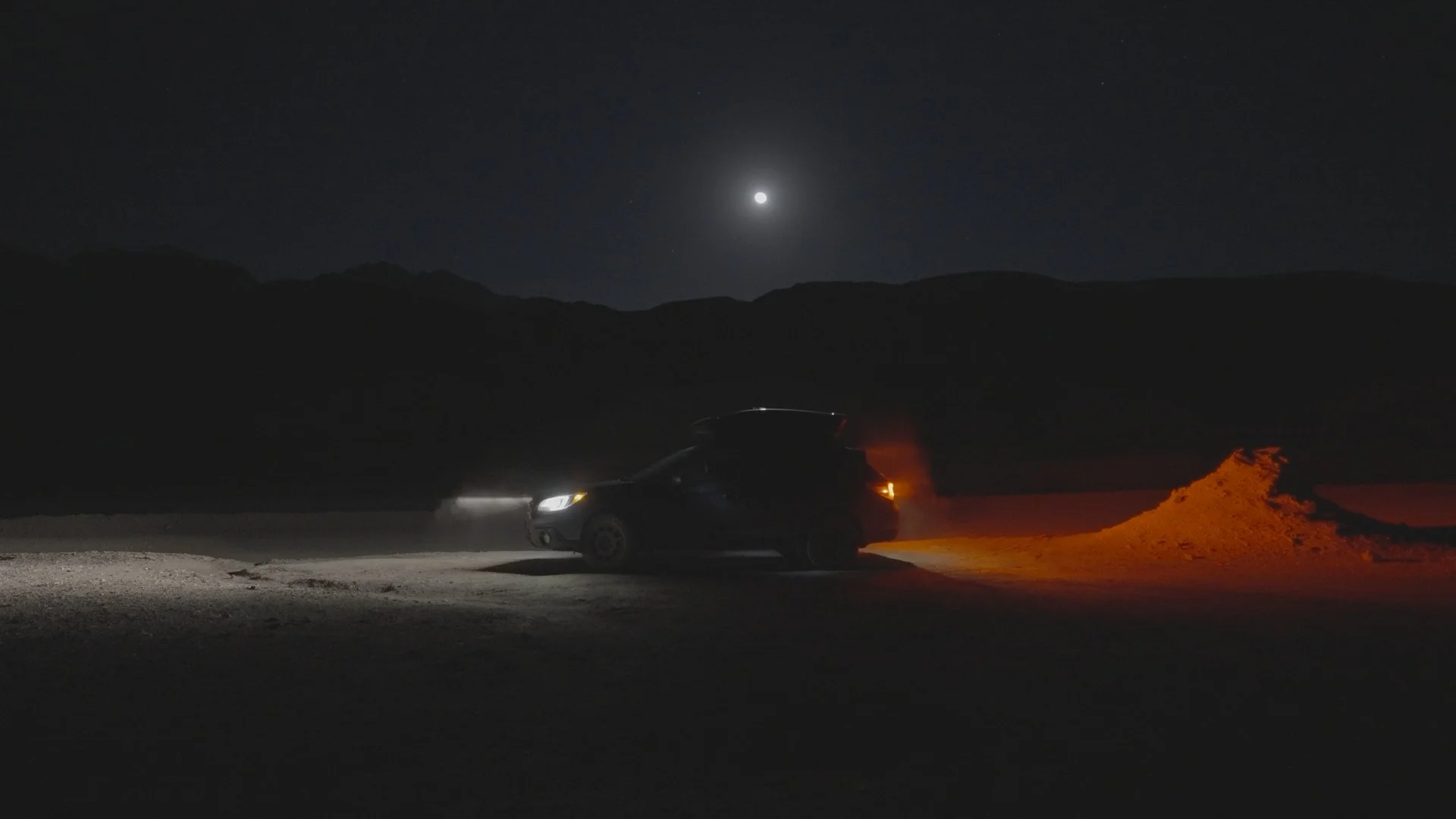Alone with the Earth
A conversation with photographer Cody Cobb on solitude, discovery, and human vision.
By Nando Costa on October, 2025
I first learned about Cody’s work in the mid-2000’s when we were both working in the motion graphics industry. Back then, his contributions to commercial projects really impressed me, but it was many years later that his out-of-this-world landscape photography work that truly got my attention.
Having seen Cody’s photographs in their glorious large print format at a Seattle gallery, it was easy to feel intimidated by the quality of his work. Yet, while I came away from this conversation feeling a renewal for the respect for his work, I also feel that his words and a peek behind his process did demystify some of it and revealed the human effort behind it all. I hope you find it as revealing and inspiring as I did.
From what I’ve read, you spend weeks alone in remote wilderness areas, sometimes walking 15-20 miles a day.
What fills the time between photographs? Are those hours spent in introspection, or do you find other ways to occupy your mind during these extended solitary journeys?
The rhythm of traversing large spaces for hours at a time temporarily quiets my overly analytical mind. I’m not trying to fill the hours so much as empty them. The wilderness has taught me patience. I can’t force these encounters with light and shadow. I wait for them and watch the subtleties in front of me.
In the long stretches between photographs I’m learning the language of a place. I watch how light travels across it, where shadows pool, the paths of clouds, and which details persist despite the wind.
The hardest part is knowing when to pause my forward momentum to set up and make a photograph. I don’t always get that right.
What are you trying to communicate with your photographs?
The psychological weight of the land, and how certain spaces mirror internal states I don’t have words for. I’m interested in that threshold moment when the external world becomes something felt internally.
I want my photographs to suggest a human presence without showing one. I’m not documenting formations and vistas; I’m documenting encounters with the ineffable.
The land isn’t a backdrop, it acts on me.
Samples from Cody’s Spectral series
Your recent work is eerily beautiful. Is it fair to say that it has become increasingly surreal and alien-looking, such as your UV-lit "Spectral" series and the otherworldly "Dark Side" photographs?
Is this evolution toward more graphical, almost science-fiction imagery a natural progression of your artistic voice, or are you consciously exploring new visual territories?
It grew out of wanting to photograph what darkness holds, not just what daylight reveals. The geology of the American Southwest already feels extraterrestrial. Different wavelengths of light reveal an additional layer that’s always present, whether we can see it or not.
I’m drawn to methods that defamiliarize familiar terrain so Earth can feel as alien as it actually is. We’re on a rock moving through space. Sometimes the pictures should admit that.
How much of your process relies on spontaneous discovery versus planned exploration?
I plan logistics so I can be safe while out alone. Routes, permits, water sources, basic topography. The photographs themselves can’t be anticipated. I often go days without touching the shutter.
The discipline is staying present enough to recognize those moments, because they don’t last long. Getting a little lost or falling behind schedule has given me some of my best images
Could you tell us a bit about your equipment?
I keep my kit fairly minimal because weight determines the range I can cover.
My main camera is a Fujifilm GFX with a small set of lighter primes, a Ricoh GR digital point-and-shoot in my pocket, a carbon fiber tripod, a strong headlamp, and a compact UV torch. Every piece has to fight for its place in my pack.
“The rise of generative work has seemed to nudge value toward intention, materiality, provenance, fieldwork, and narrative.”
Cody Cobb
How has AI disrupted photography from your point of view, whether in the commercial or art spaces?
Commercially, AI has accelerated visualization and made “good enough” imagery instantly available which has squeezed some budgets. In the art space it has flooded feeds with imagery that can be as confusing as it is mesmerizing. I feel that exposing myself to a glut of images too often dulls my senses.
The rise of generative work has seemed to nudge value toward intention, materiality, provenance, fieldwork, and narrative.
How do you think this technology will reshape the industry? Has it impacted you in any way?
Workflows are getting more hybrid, with smaller crews, faster concepts, and new concerns around authenticity. For me, it clarified what I want to protect. My photographs are records of being somewhere on Earth at a specific moment. The embodied experience of awe, discomfort, and exhaustion finds its way into the images.
Advancing technology also pushed me to bring materials and novel printmaking techniques like laser engraving depth information into handmade washi paper to root the work in something physical.
When it comes to fine art photography, do you see AI as a tool you might experiment with, or something that fundamentally changes what we value in photographic art?
Both. I’ll use it around the edges for research and occasional editing experiments. It also shifts value toward what can’t be replicated easily: traceable encounters, embodied risk, and slowness. When images get easier to generate, the difficult parts become the point.
Given your background in motion design and 3D animation, you're comfortable with digital tools and systematic approaches.
Do you think there's room for automation in art-making, or are there aspects of creativity that must remain purely human?
There’s room for automation in research, cataloging, and some post-production and print preparation. For a recent body of experimental work, I’m capturing depth information in a scene using light from multiple angles and then automating the process of creating normal maps from those captures.
Systems are useful, but the decisions that matter most in my work happen in the field. Where to stand, when to wait, when to turn back. That judgment comes from attention, not automation.
With the flood of AI-generated imagery we're seeing, do you believe human-made photographs will become more valuable or sought after?
Some will, some won’t. Generic pictures get cheaper. Work grounded in time, access, and trust becomes more valuable. As AI imagery multiplies, people hunger for connection to actual experience. The value sits in the image and in the story of its making.
Do you believe that a human-captured image is irreplaceable?
Not in every context. For many uses, generated images are adequate. But when a photograph carries the weight of a place, a moment, and the person who chose to be there, it stops feeling interchangeable. My view may evolve as the technology accelerates.
You've experimented with artificial lighting, UV photography, and digital techniques to create images that reveal "invisible" aspects of landscapes.
Do you view technology as a creative partner that helps you see differently, or as a tool to be mastered?
Technology can extend perception. UV shows colors that exist even if I can’t see them. Long exposures compress time in ways my eyes can’t. The camera is a tool I depend on, like a rope in climbing. It enables the experience but doesn’t define it. I learn enough to keep it out of the way and then pay attention to how it changes what I can notice.
When you look ahead, how do you imagine pushing your practice and your artistic vision further?
Deeper into these threshold spaces, both geographically and perceptually. There are wavelengths I haven’t worked with and formats I want to slow down into. I’m interested in longer temporal projects, returning to the same locations across years to record shifts as the climate changes.
If you had a chance to go back in time and give yourself advice, what would you say?
Embrace the discomfort. The lost, exhausted moments lead to the most honest work.
Comments
Links

